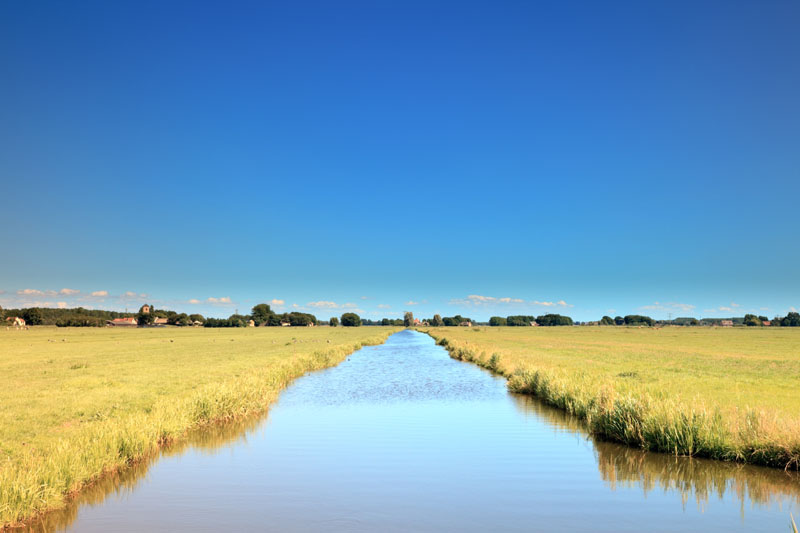
In January 2020, the Environmental Protection Agency (EPA) finalized it's Navigable Waters Protection Rule (AKA "The Dirty Water Rule") to slash federal clean water safeguards. Trump’s Dirty Water Rule is a radical reinterpretation of the Clean Water Act that would eliminate protections for rain-dependent streams, which feed drinking water sources for millions of people. And it would put at risk more than half of our nation’s wetlands, which filter pollution and protect our communities from flooding.
What’s at Stake
The Dirty Water Rule rollbacks is a disaster for our water. Here’s what is at stake:
- Drinking Water for millions of Americans: Our drinking water sources are increasingly threatened by the impacts of climate change, outdated and failing infrastructure, and growing pollution from unregulated contaminants and industrial sources. The proposal will weaken protections for drinking water sources at the time when we need to do more to protect our water.
- At least 50% of our nation’s wetlands: We’re losing wetlands at an alarming rate across the country, putting communities at risk. Devastating impacts of hurricanes such as Harvey, Irma, Florence, and Michael have all been exacerbated by the loss of wetlands, which act as nature’s sponge and filtration system.
- Millions of stream miles: Rain-dependent streams, which provide critical habitat for fish and other aquatic life and feed into rivers, lakes, and bays would lose all federal protection under the Dirty Water Rule.
- Affordable drinking water: Giving polluters a free pass will further shift the burden from corporate interests to water systems, ratepayers, and taxpayers. More pollution in our waters will mean Increasing treatment and infrastructure costs.
Who wants the Dirty Water Rule?
- Corporate polluters love it: Oil and gas, coal and mining companies, corporate agriculture, industrial manufacturers, and developers would no longer need permits to dump into or destroy unprotected waters. The Dirty Water Rule is a gift to these corporate special interests. We need more protections. Not less.
The Dirty Water Rule takes us in the wrong direction. Instead of protecting our water, it:
- Denies Science: The Dirty Water Rule is based on nothing more than talking points from industry and corporate special interests. Basic science tells us that water flows downstream. For healthy lakes and rivers, we must do more to protect the small streams that flow into them, not go backwards like the Dirty Water Rule would do.
- Uses shaky legal arguments: The Dirty Water Rule is based on an extremely narrow interpretation of Clean Water Act jurisdiction, which was rejected by the Supreme Court and the previous two administrations.
- It claims clarity, but only adds confusion: By shunning science and law, the Dirty Water Rule further confuses which water resources require federal protection, leaving more downstream rivers, lakes, and bays at risk of increased pollution.
- Is bad for the economy: Clean water is the economic driver for communities. Recreationists, farmers, hunters, anglers, and craft brewers all depend on clean water. Anglers alone generate roughly $125 billion annually, breathing life into rural communities and supporting more than one million jobs. 1
- And it could get worse. EPA has invited input on removing even more streams from protection.
Clean Water Protections Have Public Support
A bipartisan coalition of stakeholders supports the very protections that would be removed by the Dirty Water Rule, with polls showing that:
- Pollution of drinking water and the pollution of rivers, lakes and reservoirs consistently poll as the top environmental concerns for Americans in a series of Gallup polls. 2
- 83% of hunters and anglers in a 2018 survey said that EPA should apply the rules and standards of the Clean Water Act to smaller, headwater streams and wetlands. Support included 77% of Republicans, 79% of Independents and 97% of Democrats. 3
- 80% of voters nationwide supported the 2015 Clean Water Rule including 68% of Republicans, 75% of Independents, and 94% of Democrats. Additionally, more than three in five voters think the government should be doing more to protect the nation’s waters from pollution. 4
_________________________________
1 American Sportfishing Association “Sportfishing in America: An Economic Force for Conservation” November 2018.
2 Gallup. “In U.S., Water Pollution Worries Highest Since 2001” March 31, 2017.
3 Theodore Conservation Partnership, National Poll: Hunters and Anglers Relaxing Clean Water Standards for Streams and Wetlands July 2018
4 League of Conservation Voters, Voters Favor the Clean Water Rule by a Wide Margin, August 2015,
